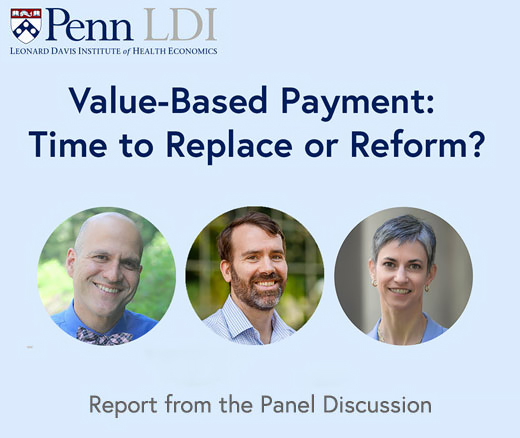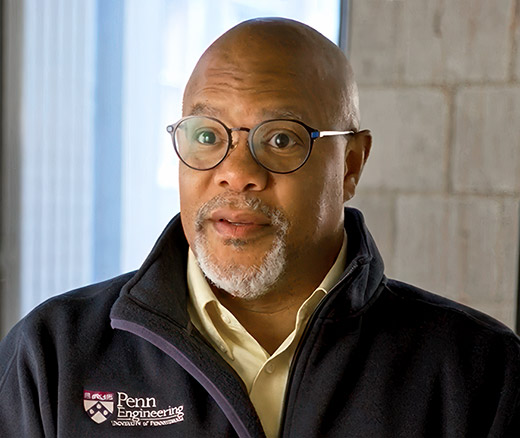
When Medicare Sent Patients Home Sooner, Mary Naylor Built the Safety Net
Her Transitional Care Model Shows How Nurse-Led Care Can Keep Older Adults Out of the Hospital and Change Care Worldwide
Blog Post
Many people are again commuting to work, children have returned to their schools, and my head is throbbing from a head cold as I sit surrounded by Kleenex and cough drops, infected by a bug that does not cause COVID-19. This looks like a typical fall day before the pandemic. So, is the pandemic over?
Well, not exactly. The “scramble-around-with-your-head-cut-off” phase has passed. But now we must figure out how to live and work with COVID-19, another respiratory bug that hangs out with other microbes on the playground and in large public gatherings.
What happens now are the many things that occur behind the scenes for the average American, like deciding who will pay for COVID-19 vaccines and boosters. The baton gets passed from the emergency systems to the routine health systems.
So instead of the federal government paying for your COVID-19 booster, your employer-sponsored health insurance or public insurance will. As the laws and policies shift from an emergency posture to a routine one, with a primary goal to make sure no one falls through the cracks, what should the average person do while living their daily lives?
First, the COVID-19 global death toll remains very high – about 10,000 per week in late September. The bug is still spreading widely around the world and can spawn dangerous progeny, which prevents us from declaring an end to the COVID-19 emergency. Yes, we are worried about variants, and not the “Teenage Mutant Ninja Turtles” kind. So, be vigilant and know that you may want to change your behavior again, and resume masking, for example.
Second, we are lucky we have so many safe and effective vaccines on every street corner, housed under the same roof as the Ben & Jerry’s ice cream at your local pharmacy. Get vaccinated if you have not. We saw surges in cases the past two winters and we may see something like that again. Even though a lot of people are getting vaccinated, some have not. The virus has already killed more than 200,000 Americans this year, a rate four times as a “bad” flu season.
Third, as businesses think about how to prosper in a post-pandemic environment, what has become apparent is that many people can be effective working remotely. Flexibility and a hybrid model of in-person and remote work may be the key to balancing the bug and the economy with the bonus of enhancing the happiness of employees. Building in workforce resilience – especially for workers who can’t work remotely – is central to preparing for the pandemic resurgence that many experts expect to arrive this fall. Such flexibility will help us endure future pandemics and emergencies, especially as it looks like COVID-19 will become seasonal like the flu.
While President Biden announced the pandemic as “over,” it seems only partly true. It’s a matter of semantics. We have passed the mad scramble period, but there are still about 400 COVID-19 deaths per day in the U.S. The implications of long COVID could cost the economy trillions, and more immediate to many is the haze in decision-making about planning ahead – travel on a plane, but not on a bus; go to an outdoor concert, but not an indoor one; watch “Maverick” in the movie theater, or on-demand at home. For that last one, we gave up the theater’s mind-blowing Dolby surround sound of a Mach 10 flight for the pretty decent Bose system at home. These are the choices I have made in my life.
As you resume your activities and choose your priorities – attending an in-person family reunion versus Zoom, wedding versus funeral – know that everyone’s choices will be different. It will take time to recover from living through three years of a devastating pandemic. So, be mindful that people are in flux and may be at a different point from you. Like my husband who is in physical therapy for a shoulder replacement. His recovery will be long and difficult, but the golf course is in sight.
Angela K. Shen, ScD, MPH, a retired Captain in the U.S. Public Health Service, is a Senior Fellow at the Leonard Davis Institute of Health Economics. She is also a Visiting Scientist at the Children’s Hospital of Philadelphia and an Adjunct Associate Professor at the University of Pennsylvania’s Perelman School of Medicine.


Her Transitional Care Model Shows How Nurse-Led Care Can Keep Older Adults Out of the Hospital and Change Care Worldwide

Chart of the Day: Medicare-Medicaid Plans—Created to Streamline Care for Dually Eligible Individuals—Failed to Increase Medicaid Participation in High-Poverty Communities

Penn LDI Debates the Pros and Cons of Payment Reform

Direct-to-Consumer Alzheimer’s Tests Risk False Positives, Privacy Breaches, and Discrimination, LDI Fellow Warns, While Lacking Strong Accuracy and Much More

One of the Authors, Penn’s Kevin B. Johnson, Explains the Principles It Sets Out

Six Lessons the U.S. Can Learn from Europe About Protecting Health Data Linkages